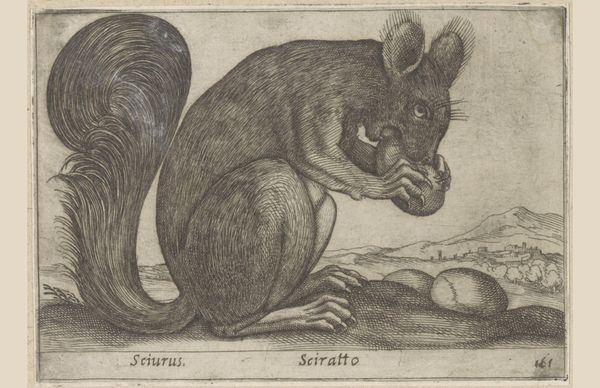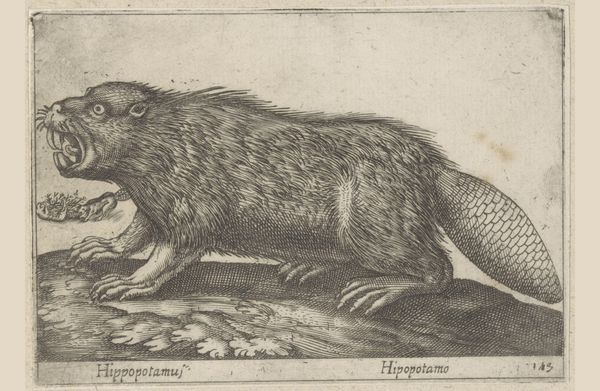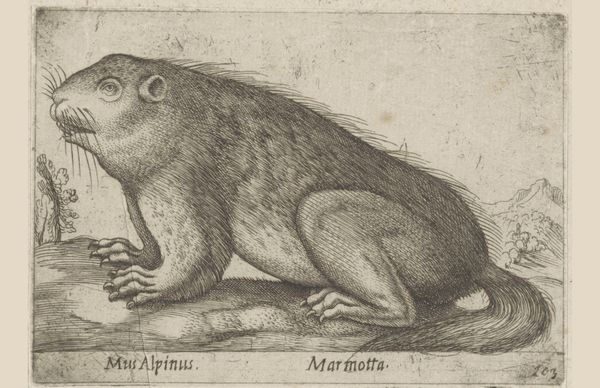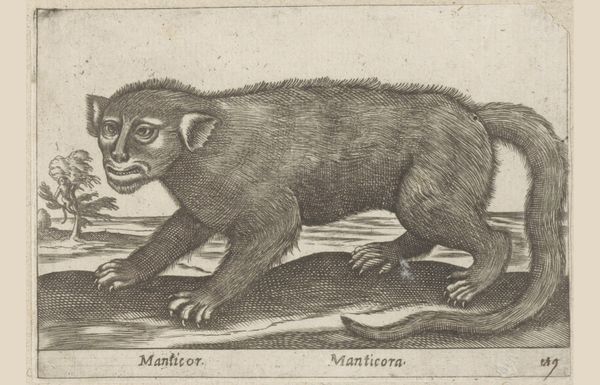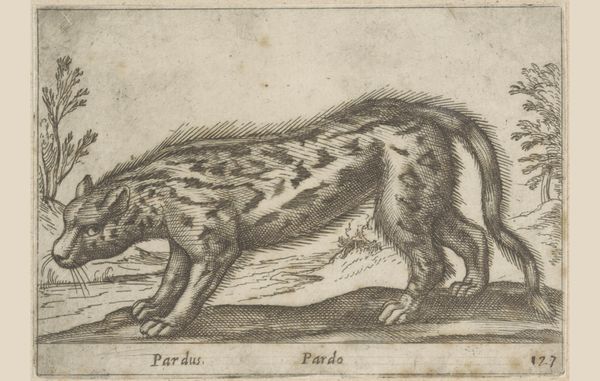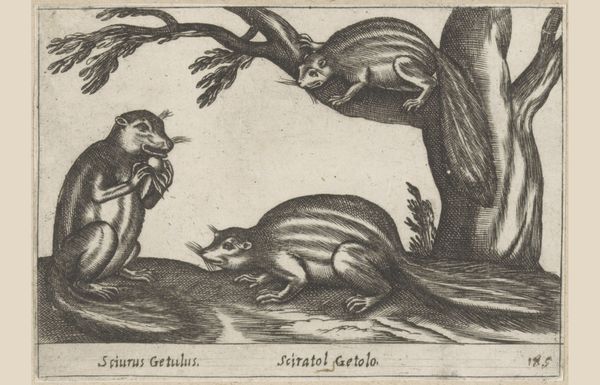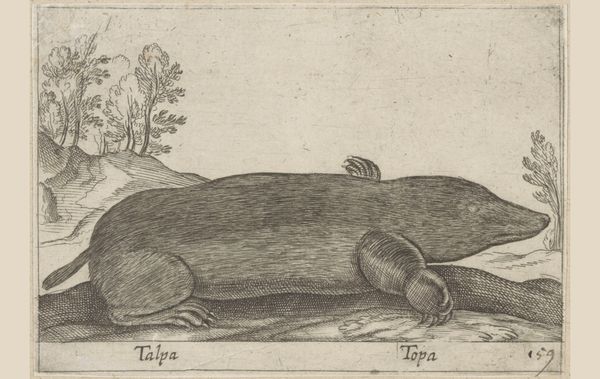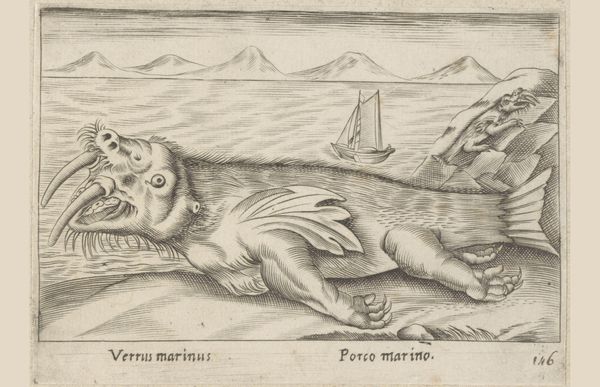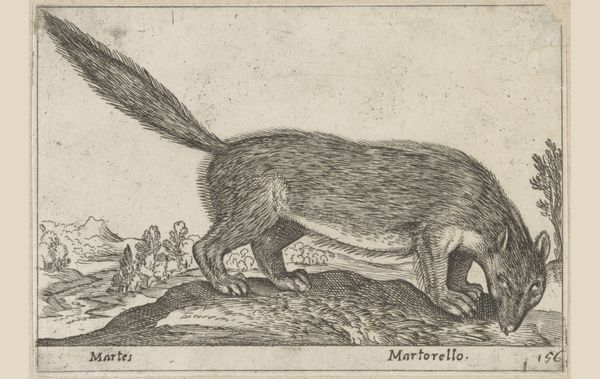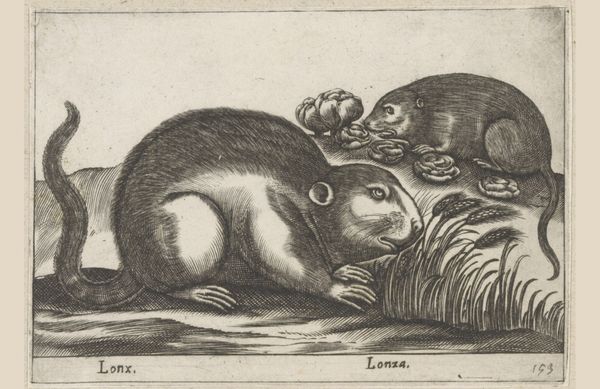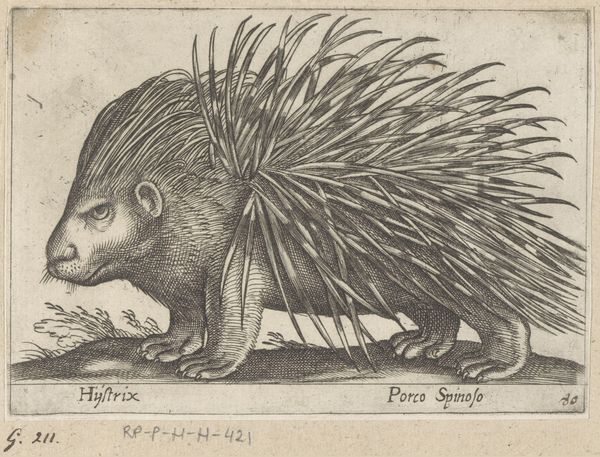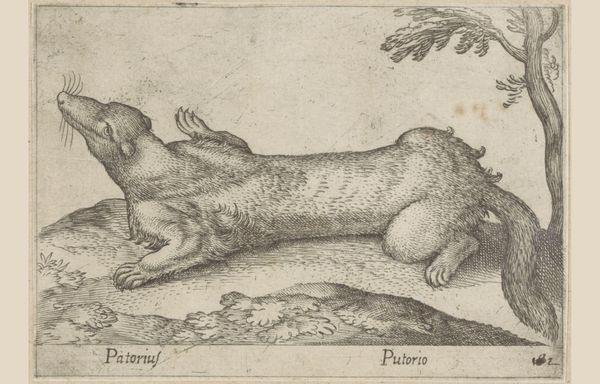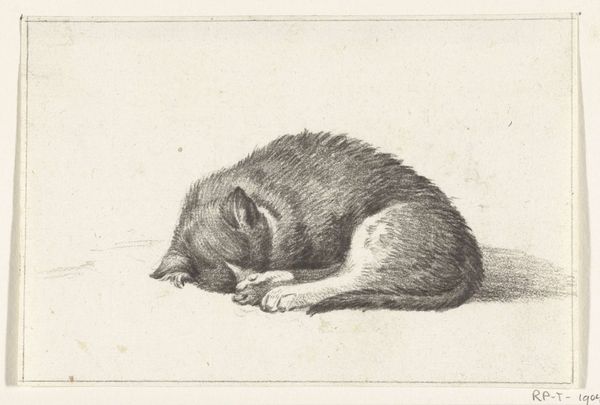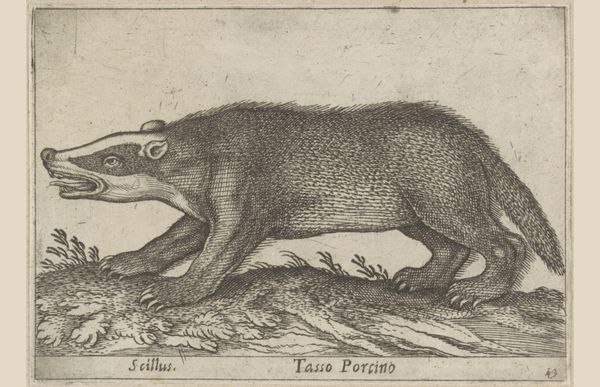
print, engraving
#
baroque
# print
#
engraving
Dimensions: height 95 mm, width 137 mm
Copyright: Rijks Museum: Open Domain
Curator: Look at this interesting print. It's titled "Cavia," made by Antonio Tempesta before 1650. It’s an engraving. Editor: Well, my immediate impression is...it's surprisingly charming for a rodent depiction! The detail is incredible. Curator: It is! I’m drawn to the fact that Tempesta chose engraving for this subject. It's a laborious, meticulous process usually reserved for more 'elevated' subjects. Considering this animal might have been quite exotic then, was its depiction via a fine art process a signifier of status, an object of curiosity to be elevated through artistic means? Editor: That's a good question. Considering the context of the burgeoning print market, images like these played a vital role in circulating knowledge, sometimes of exotic subjects. A print like this could have made this exotic animal accessible to a wider audience. Was Tempesta catering to an emerging scientific curiosity or simply trying to create aesthetically pleasing representations of new species? Curator: Possibly both! We shouldn’t underestimate the artistry either. See how Tempesta used the engraving technique to create varied textures. The meticulous rendering suggests an appreciation for the subject and medium. But how readily was this type of imagery disseminated at the time, and through what societal strata? Editor: Prints were increasingly collected, and kept in albums, although we lack sufficient insights into how they were understood and shared. But it begs a lot of interesting questions. Why the focus on seemingly "ordinary" animals through these techniques? Who was the intended audience and how might its reception reflect broader colonial and trading trends? Curator: Exactly. Considering "Cavia," or guinea pig, was being introduced to Europe at the time, perhaps this image represents a form of early documentation but also the consumption, literally and figuratively, of the New World's fauna. Editor: The circulation of the image speaks volumes about social and economic transformations. "Cavia," isn't just about a single guinea pig, it reveals something about the mechanisms through which natural history and European appetite for the "exotic" spread across the continent. Curator: Absolutely, "Cavia" encourages us to ask how the techniques of art both illuminate and complicate our understandings of science, culture and consumerism. Editor: And remind us how an image, however small or seemingly mundane, contains entire worlds within its lines.
Comments
No comments
Be the first to comment and join the conversation on the ultimate creative platform.
